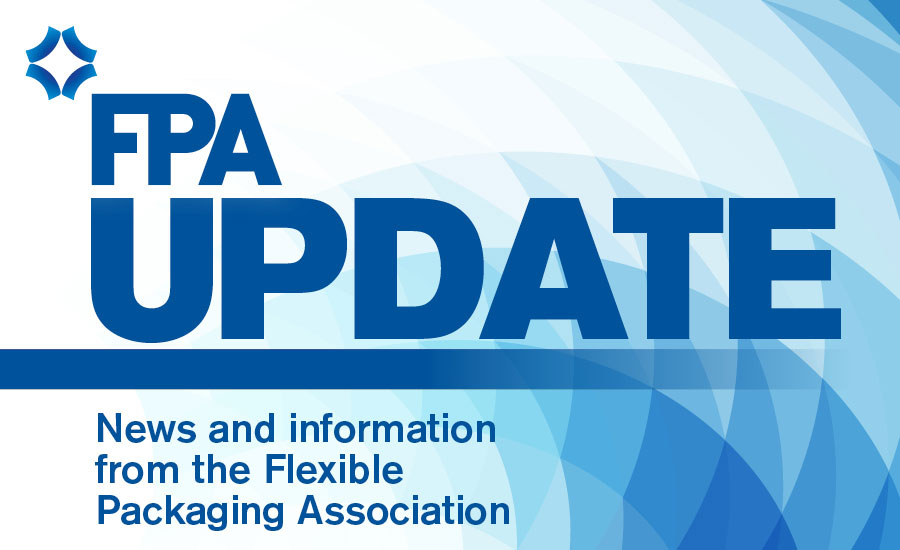FPA Website Extols Benefits of Flexible Packaging

The Flexible Packaging Association (FPA) published a handout that illustrates the many sustainability benefits of flexible packaging and highlights the FPA’s consumer facing website,www.perfectpackaging.org.
Flexible Packaging Creates Less Environmental Footprint
When considering the full life cycle of packaging materials, in most cases, flexible packaging requires less energy to manufacture and transport, reduces food waste, and sends less material to landfills. Approximately 50% of flexible plastics are easily recyclable through in-store drop-off programs, while the other half can be chemically recycled or used as energy feedstock. Research is ongoing to develop more recycling options for flexible packaging.
Flexible Packaging is Recyclable
In the U.S., about half of flexible packaging can easily be recycled through in-store drop-off programs like Wrap Recycling Action Program (WRAP). FPA supports the How2Recycle labeling program to instruct consumers on what and where to recycle. As has happened in other markets, technical innovation comes first, and recycling needs time to catch up. To maximize value recovery and minimize environmental impact at the point of package disposal requires a conscious choice by the consumer. Many efforts are underway to expand recovery and recycling opportunities, including public and private collaborative programs that help educate consumers and put new processes in place. Others focus on developing new recycling technologies or more recyclable materials for use in flexible packaging. The Materials Recovery for the Future (MRFF) project and Hefty Energy Bag are collaborative programs successfully working towards end-of-life recovery of all flexible packaging.
Flexible Packaging Reduces Waste at Every Stage of Its Life
In the United States, one third of food waste is from cooking or serving too much, and 2/3 of food waste is due to food spoilage. The typical American family throws away 40% of purchased fresh meat, fish, and poultry; 51% of purchased dairy and fruit; and 44% of purchased fresh vegetables. Flexible packaging extends the shelf life of food, both in-store and at home, thereby decreasing food waste. Many of the convenience benefits of flexible packaging contribute directly to reducing food waste:
- Resealable
- Cook and serve packaging
- Extended shelf life
- Portion control
- Portability
Food waste is also a major contributor to greenhouse gas emissions from landfills. Innovation and technology allow flexible packaging manufacturers to use fewer natural resources in the creation of their packaging, use the least amount of packaging necessary to protect and
Marine Debris
The bulk of marine debris comes from emerging countries that do not yet have a fully developed recovery infrastructure to handle waste, much less a recycling system. According to a study by the Ocean Conservancy, 60% of global marine debris originates from five countries in Asia (China, Indonesia, Philippines, Thailand, and Vietnam). The Ellen MacArthur Foundation’s (EMF) New Plastics Economy Report cited that 82% of all plastic global marine debris came from Asia.
For comparison, the same EMF report cited that the U.S. and Europe combined contribute around 2% of plastic leakage into the oceans. These Asian countries lack appropriate solid waste and recovery systems, but they are also experiencing a growing consumer appetite for the convenience of packaged goods. While marine debris should be addressed globally, the focus of the problem should be in Asia to help develop the solid waste and recovery systems they need.
For more information, visit www.perfectpackaging.org.
Looking for a reprint of this article?
From high-res PDFs to custom plaques, order your copy today!







